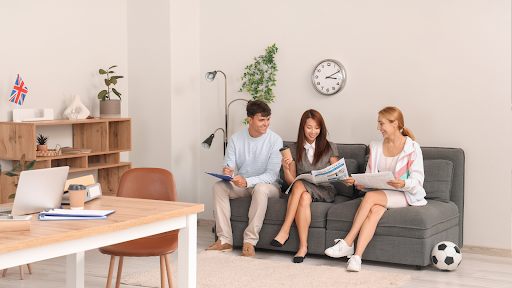You know what’s wild? We’re expecting today’s classrooms to work magic. Think about it – you’ve got kids with ADHD sitting next to students on the autism spectrum, wheelchair users alongside fidgety learners, and everyone’s supposed to somehow thrive in the same rigid setup our grandparents used.
Here’s the thing: those old-school rows of identical desks? They’re not just outdated – they’re actively working against half your students. But here’s where it gets interesting. The fix isn’t some complex curriculum overhaul or expensive technology. It’s actually simpler than you think. You need to completely rethink the furniture.
When you invest in smart furniture choices, you’re not just buying stuff to fill a room. You’re literally building the foundation for educational equity. And trust me, every kid who walks through your door will feel the difference.
Why Your Furniture Choices Actually Matter More Than You Think
Furniture seems like the boring part of education. But here’s what research keeps showing us: inclusive education furniture isn’t just about comfort. It’s about brain function.
When you create spaces tailored to how different students actually learn, something magical happens. By tailoring furniture solutions to individual classrooms, educational institutions can create inclusive environments where every student feels valued and supported. It’s like watching a puzzle piece finally click into place.
Think about your own home for a second. You probably have different spaces for different activities, right? Maybe you’ve got comfortable couches for living room gatherings that bring your family together naturally.
Collaborative rooms in schools and universities need that same thoughtful design. Just as couches in a living room invite conversation and connection, lounge-style seating in collaborative rooms encourages group discussions, brainstorming, and a sense of belonging outside the traditional classroom setup.
Your learning spaces need that same intentional design; areas that encourage community while still respecting individual needs.
Here’s What Happens in Your Students’ Brains
This part blew my mind when I first learned about it. A kid with ADHD isn’t just “choosing” to be distracted in a hard plastic chair. Their brain is literally fighting against the discomfort, stealing energy from learning. Same goes for kids on the autism spectrum – they need predictable spaces with clear boundaries, or their nervous system stays in alert mode all day.
Promoting inclusive learning environments means understanding that when a student is physically uncomfortable, their brain can’t focus on algebra or literature. It’s that simple, and that important.
The Furniture Categories That Actually Make a Difference
Ready for some real talk? Classroom furniture for inclusivity isn’t about buying the most expensive stuff. It’s about being strategic with pieces that serve multiple purposes and students.
The Game-Changers: Adjustable Everything
Adaptable furniture solutions start with one simple principle: nothing should be stuck at one height or in one position. Desks that adjust up and down don’t just help wheelchair users – they help the tall eighth-grader whose knees don’t fit under standard desks, the kid who thinks better standing up, and the student recovering from a broken leg.
Modular furniture is like having classroom Legos. Morning reading time? Push tables together for cozy circles. Afternoon project work? Separate them for focused individual space. It’s flexibility that actually works.
The Sensory Stuff That Really Helps
Here’s something most people don’t realize: some kids need to fidget, squeeze, or rock to think clearly. Weighted lap pads, textured desk edges, and movement-friendly seating aren’t distractions – they’re tools that help certain brains access learning.
Creating quiet corners with soft seating gives overwhelmed students a place to regroup without missing out entirely. It’s inclusion in action.
Why Schools Struggle (And How to Fix It)
I’ll be straight with you – money is usually the issue. Rural preschools, despite having more space, often struggle with outdated furniture due to financial constraints and limited access to updated designs. This creates real inequities that ripple through entire communities.
But you don’t need to renovate everything at once. Start with one multi-purpose piece that can replace several traditional items. That height-adjustable table might cost more upfront, but it serves five times as many students effectively.
Getting the Right People Involved
Furniture for special needs students requires a team approach. Your occupational therapist sees things teachers might miss. Special ed specialists understand specific disabilities. And – this is crucial – the students themselves know what actually helps them learn.
When everyone weighs in, you end up with furniture that solves real problems instead of creating new ones.
Building Learning Zones That Actually Work
Forget everything you know about classroom layouts. Modern inclusive spaces work more like coffee shops – different areas for different moods and tasks.
Movement Areas That Make Sense
Some kids literally cannot sit still and think at the same time. Standing desks, balance ball chairs, and floor cushions give these learners options without disrupting others. It’s not chaos – it’s choice.
Collaboration Spaces Done Right
Round tables eliminate the awkward head-of-table power dynamic. Different seating heights mean kids can find their comfort zone. Built-in charging stations keep technology accessible without turning into a tangled mess.
Measuring What Actually Matters
Here’s how you’ll know it’s working: fewer behavioral incidents, higher engagement, improved test scores. But the real win? Watch your students’ faces. When kids feel like they belong, everything else follows.
Schools tracking these changes often discover unexpected benefits. Students develop independence, learn empathy, and build problem-solving skills that stick with them long after graduation.
The future looks even brighter. Smart furniture that adapts automatically, biometric feedback systems, and AI-powered layouts are moving from science fiction to school reality.
Your Move: Building Tomorrow’s Classroom Today
Listen, transforming your classroom isn’t about following some trendy educational fad. It’s about acknowledging a simple truth: your students are wildly different people with different needs, and your space should reflect that reality.
When you invest in inclusive education furniture, you’re sending a message that echoes through every lesson, every interaction, every small victory. You’re saying every learning style matters. Every physical need deserves accommodation. Every student has the right to feel comfortable and included.
The real question isn’t whether your budget can handle these changes. It’s whether you can afford to keep using furniture that works against half your students every single day. Because here’s what I know for sure: when you create a space where everyone can truly learn, everyone wins.
Your Burning Questions, Answered
What is arranging furniture to encourage active learning?
When we arrange school furniture in a way that facilitates collaboration, students are more likely to engage in active learning. By grouping desks or tables together, we create opportunities for students to work in teams, share ideas, and learn from one another.
What is the meaning of educational furniture?
Educational furniture is about more than simply providing a set of classroom chairs or ICT desks to fill a class or college space. Layout and design perform an essential part of classroom furniture – because inspiring learning environments help teachers and pupils excel.
How can schools afford inclusive furniture upgrades?
Schools can implement changes gradually through grants, community partnerships, and multi-functional pieces that serve various needs while maximizing budget impact.





